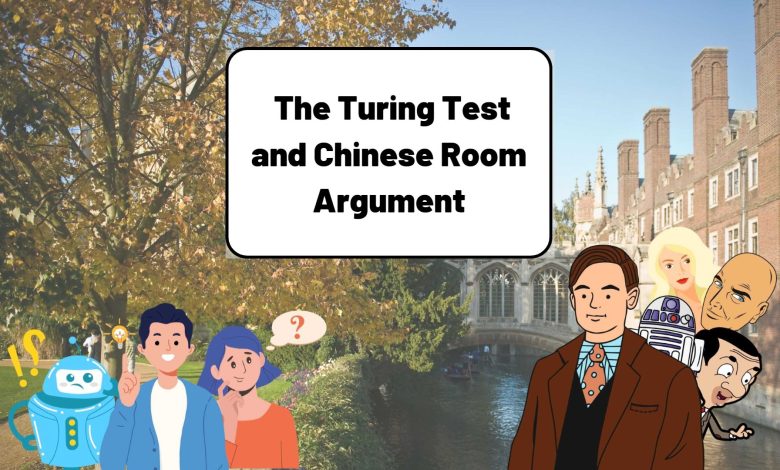When we think of the term “philosophy“, the first thing that comes to mind is a discipline that dictates asking the question “why?” constantly and an image of people making “hmm” sounds, rubbing their beards with their hands on their chins. But philosophy, of course, is not what it seems from the outside.
What is a Thought Experiment?
In fact, one of the first things that should come to mind when we think of philosophy is thought experiments. Of course, besides these, we should not forget the idea that states we should go to the root of every problem and an understanding that aims for purely rational (logical) analysis. Let’s go back to our question in the sub-title. What is a thought experiment?
Thought experiments are fictional events used to rationally prove a thought to you. For example, I want to give you the idea that Elon Musk is an alien. It is clear that I must rationalize this extreme claim. Otherwise, there is no logical basis for this proposition alone. In order to do that, I begin to set up a story and event for you. Finally, I convince you that Elon Musk is an alien in that story. Of course, the purpose of thought experiments is not to impose a thought.
Thought experiments are essentially brain training. They take us to an abstract situation and make us think about dozens of other issues while thinking about that simple situation. In fact, another article previously published on our site, “The Ship of Theseus“, is an article in this manner. Rather than talking about a ship, it allows us to consider the concept of change and then even question the mind-body relationship and its primacy. If you wish, you can review the “A Paradox Series: The Ship of Theseus” that we mentioned.

Introduction to the Turing Test
Now, if we agreed on what thought experiments are, I’ll introduce you to a real test first. The Turing Test is not just a thought experiment. This test is a test that starts from an abstract thought and is still used. The Turing Test is named after the English mathematician and originally a computer scientist, Alan Turing. We skip the details of this scientist’s extraordinary intelligence, such as the fact that he helped World War II end 4 years earlier, and move on to explaining this test, which he named directly after himself.
Turing, one of the greatest pioneers of computer science and artificial intelligence, decides to test the artificial intelligence he created and the artificial intelligence that will be developed after him in order to test whether a computer can think like a human. Although this test is difficult to describe, let’s try it!

Now Let’s Come to Our Test!
Let’s say we have 4 people. Professor Xavier, Mr. Bean, Pamela Anderson, and our AI R2-D2. Of these four, Professor Xavier decides to do a project. He says let me test R2-D2 with this test as if I’m not a mutant who can read people’s minds. He grabs Mr. Bean and Pamela who happened to be passing by and adds them to his experiment. Xavier takes Mr.Bean into a room and puts two doors inside the room. One of these doors goes to Pamela and the other goes to R2-D2. Professor, asks Pamela and R2-D2 to correspond with Mr. Bean through writing. However, Xavier doesn’t tell Mr. Bean who is behind which door.
The test is based on this idea; if Mr. Bean cannot understand whether he is communicating with a real person or with artificial intelligence; In other words, if the text written by R2-D2 is as natural and humane as a human has written, the artificial intelligence passes this test. It took many years for the test that emerged in the 1940s to be passed by real artificial intelligence. Almost 80 years!
The artificial intelligence named “Eugene Goostman” developed by two Russian software developers became the first artificial intelligence to pass this test. In other words, if Turing could see these days, he could say that this artificial intelligence has a mind as convincing as a human. But does Eugene really have a convincing and natural mind as a human?

Chinese Room Argument
We just saw that a real experiment can be passed by artificial intelligence. So was that enough? Let’s think again after this other thought experiment. The Chinese Room Argument is a thought experiment designed by John Searle to defy the Turing Test. In this thought experiment, we take a person who doesn’t know any Chinese and put them on a Chinese test. But do not be afraid, we also give an English-Chinese dictionary to our friend who does not speak Chinese. He completes the entire exam with the help of this dictionary and passes the exam amazingly. It is at this point that Searle asks: “Does this person really speak Chinese?”
Actually, our question is simple. Does passing an exam or test really mean you’re good at it? So when you add 2 and 2, do you know math or do you learn that language when you pass the language exam through the dictionary? The answer can of course vary from person to person, but Searle’s answer here would be a “No”. Of course, the power of this thought experiment doesn’t just come from its open criticism of the Turing Test. It also makes the judgment that being able to do something is not equivalent to knowing it.
In a Nutshell
These two experiments create one of the most important debates in the history of philosophy. Because it questions both when and how artificial intelligence can be equivalent to human intelligence, as well as the relationship between knowing something and being successful. In this respect, the experiments state that artificial intelligence cannot gain consciousness with Turing’s criterion. In other words, they also argue that we need a new criterion. On the other hand, it makes us feel as if it is not so important to pass the test no matter what test we do. We have left behind a golden debate in the history of philosophy, and with our other articles on philosophy, we are stepping into the heart of philosophy.
References and Future Readings
Encyclopædia Britannica, inc. (n.d.). Computer designer. Encyclopædia Britannica. Retrieved May 13, 2022, from https://www.britannica.com/biography/Alan-Turing/Computer-designer
Oppy, G., & Dowe, D. (2021, October 4). The turing test. Stanford Encyclopedia of Philosophy. Retrieved May 13, 2022, from https://plato.stanford.edu/entries/turing-test/
Chinese Room Argument. Internet encyclopedia of philosophy. (n.d.). Retrieved May 13, 2022, from https://iep.utm.edu/chinese-room-argument/
Eugene Goostman? who is – sci.utah.edu. (n.d.). Retrieved May 13, 2022, from https://www.sci.utah.edu/~beiwang/teaching/cs1060/Lecture02-CS1060-AI.pdf
The proofreading has been done by Asu Pelin Akköse and Mete Esencan.
Would you like to support us?
-
If you wish, you can support us by making
a monthly or one-time donation via our
Patreon account.
I Would Like To Support You!
- For more detailed information, you can check our “Support Us!” page!











